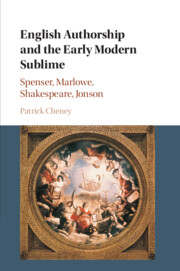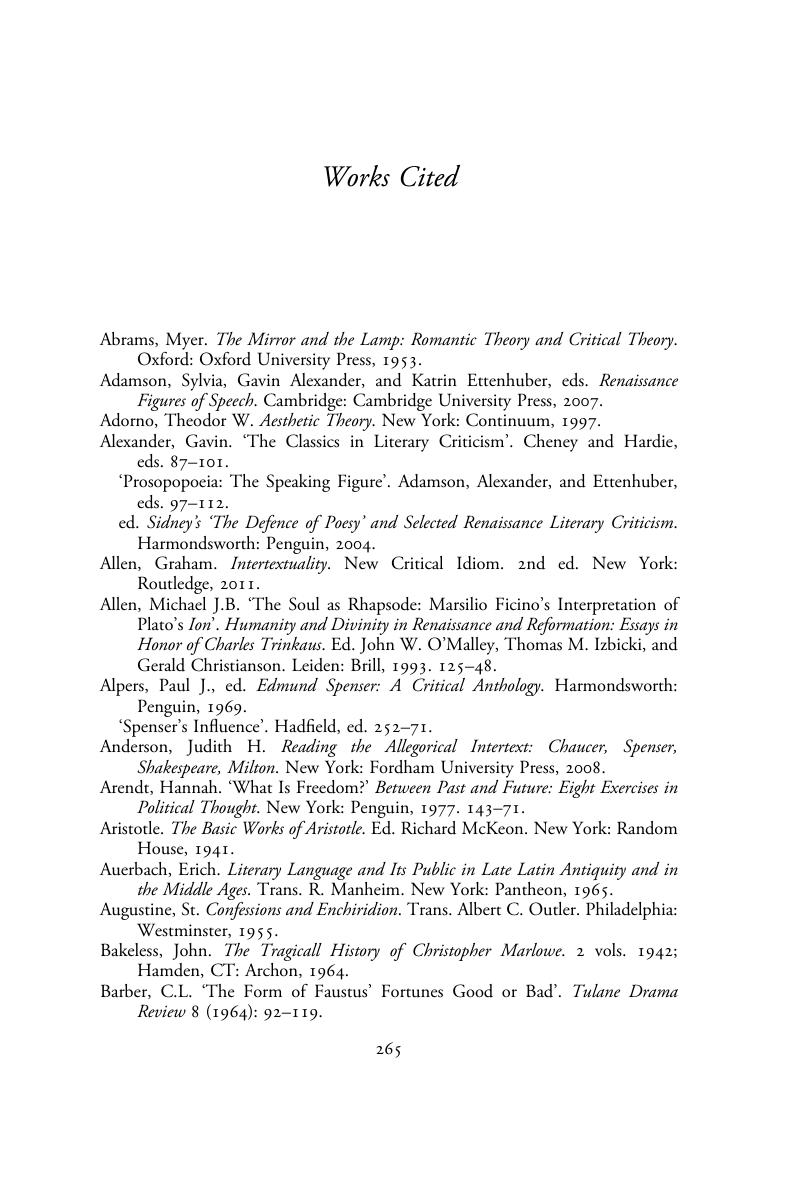 English Authorship and the Early Modern Sublime
English Authorship and the Early Modern Sublime Book contents
- English Authorship and the Early Modern Sublime
- Frontispiece
- English Authorship and the Early Modern Sublime
- Copyright page
- Dedication
- Contents
- List of Figures
- Acknowledgements
- Note on Texts and References
- Abbreviations
- Additional material
- Introduction
- Chapter 1 Citizenship and Godhood
- Chapter 2 Spenser’s Sublime Career
- Chapter 3 Fictions of Transport
- Chapter 4 Tragedy and Transport
- Chapter 5 ‘A world of figures’
- Chapter 6 The Sublime Wit of Ben Jonson
- Afterword
- Works Cited
- Index
- References
Works Cited
Published online by Cambridge University Press: 09 March 2018
- English Authorship and the Early Modern Sublime
- Frontispiece
- English Authorship and the Early Modern Sublime
- Copyright page
- Dedication
- Contents
- List of Figures
- Acknowledgements
- Note on Texts and References
- Abbreviations
- Additional material
- Introduction
- Chapter 1 Citizenship and Godhood
- Chapter 2 Spenser’s Sublime Career
- Chapter 3 Fictions of Transport
- Chapter 4 Tragedy and Transport
- Chapter 5 ‘A world of figures’
- Chapter 6 The Sublime Wit of Ben Jonson
- Afterword
- Works Cited
- Index
- References
Summary

- Type
- Chapter
- Information
- English Authorship and the Early Modern SublimeFictions of Transport in Spenser, Marlowe, Jonson, and Shakespeare, pp. 265 - 290Publisher: Cambridge University PressPrint publication year: 2018


